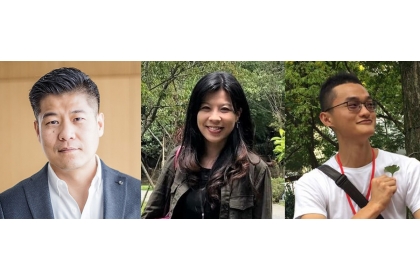New Research Unveils Taiwan's Escalating Threat of Forest Fires
2024-02-16
興新聞張貼者
Unit秘書室
2,454
Traditionally known for its lush evergreen forests and a humid climate that historically minimized the risk of large-scale wildfires, Taiwan is witnessing a concerning shift in its environmental landscape. Recent severe forest fires, including devastating incidents in Yushan National Park and across the island, highlight a critical need for updated fire management and prevention strategies in the wake of changing climate conditions. A new study conducted by a cross-border collaboration between National Chung Hsing University in Taiwan and Utah State University in the United States, offering a comprehensive analysis of future wildfire risk projections under various climate scenarios, suggests a quantitative trend towards increased wildfire risks, marking a significant departure from the past for Taiwan. The authors of this study include Wan Yu Liu, Simon Wang, and Hong Wu Yu of Taiwan.
Published in the reputable journal Climatic Change, the study employs the Fire Weather Index (FWI) System, a tool for assessing wildfire potential based on weather observations, alongside multiple climate model simulations. Spanning projections from 2021 to 2100 under different levels of warming severity, the findings reveal an alarming increase in fire weather severity across Taiwan, particularly during the dry season from November to April. This suggests an expected shift in the peak fire season to an earlier start, driven by changes in precipitation patterns and temperature increases.
The study also highlights regional disparities in the increase of fire weather severity, with northern and central Taiwan facing heightened risks. Moreover, the projections underscore the sensitivity of Taiwan's fire weather conditions to global greenhouse gas emissions, the projections underscore the sensitivity of Taiwan's fire weather conditions to global greenhouse gas emissions.
The tangible impacts of these projections are evidenced by recent events, such as the June 2023 forest fire in Miaoli County's Dahu Township and the April 2023 fire in Kaohsiung. These incidents, challenging to manage due to their locations and the extensive resources required for containment, underscore the importance of integrating climate change projections into wildfire risk management.
Author Wan-Yu Liu of National Chung Hsing University comments on the study's implications, "Our findings reveal a future where wildfire risks are significantly heightened, demanding a reevaluation of our current fire management strategies." Emphasizing the importance of adaptation, Liu adds, "Adjusting to these changes is crucial for preserving our ecosystems and safeguarding human life and property."
Echoing this sentiment, Simon Wang of Utah State University states, "Incorporating advanced climate projections into wildfire risk management will enable Taiwan to develop more effective strategies to mitigate the impact of forest fires." He advocates for a collective effort from all sectors of society to adapt to and address the escalating climate change threat to the island's safety, biodiversity, and well-being.
Published in the reputable journal Climatic Change, the study employs the Fire Weather Index (FWI) System, a tool for assessing wildfire potential based on weather observations, alongside multiple climate model simulations. Spanning projections from 2021 to 2100 under different levels of warming severity, the findings reveal an alarming increase in fire weather severity across Taiwan, particularly during the dry season from November to April. This suggests an expected shift in the peak fire season to an earlier start, driven by changes in precipitation patterns and temperature increases.
The study also highlights regional disparities in the increase of fire weather severity, with northern and central Taiwan facing heightened risks. Moreover, the projections underscore the sensitivity of Taiwan's fire weather conditions to global greenhouse gas emissions, the projections underscore the sensitivity of Taiwan's fire weather conditions to global greenhouse gas emissions.
The tangible impacts of these projections are evidenced by recent events, such as the June 2023 forest fire in Miaoli County's Dahu Township and the April 2023 fire in Kaohsiung. These incidents, challenging to manage due to their locations and the extensive resources required for containment, underscore the importance of integrating climate change projections into wildfire risk management.
Author Wan-Yu Liu of National Chung Hsing University comments on the study's implications, "Our findings reveal a future where wildfire risks are significantly heightened, demanding a reevaluation of our current fire management strategies." Emphasizing the importance of adaptation, Liu adds, "Adjusting to these changes is crucial for preserving our ecosystems and safeguarding human life and property."
Echoing this sentiment, Simon Wang of Utah State University states, "Incorporating advanced climate projections into wildfire risk management will enable Taiwan to develop more effective strategies to mitigate the impact of forest fires." He advocates for a collective effort from all sectors of society to adapt to and address the escalating climate change threat to the island's safety, biodiversity, and well-being.




